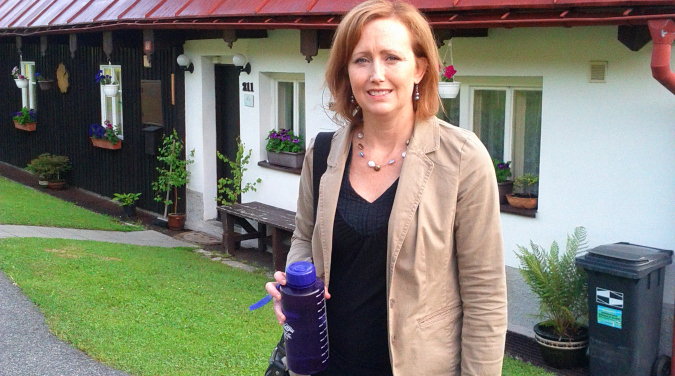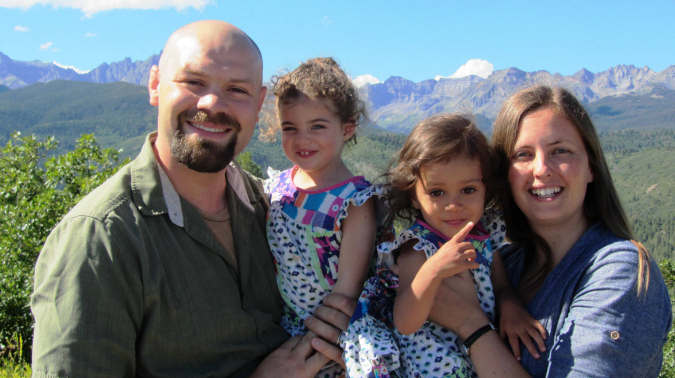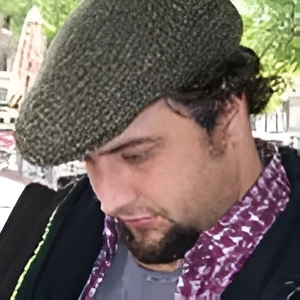People tend to adopt for a host of reasons but often share a common desire – to give a disadvantaged child a better life. Here in the Czech Republic, there are 20,000 children in residential care (a figure that includes those not up for adoption), one of the highest per capita number of displaced children in Europe. Roma children roughly make up the majority of children in residential care in this country. Perhaps this explains why foreigners living in the Czech Republic are able to adopt with surprising ease, particularly when ethnicity is not a concern.
This was the case for two Prague-based, expat families who shared their adoption stories with us.
PARTNER ARTICLE
A new daughter
Kelsie and John Mullen are an American couple. They already had two biological children but adopted a Czech baby in 2003 while living in Prague. Mrs. Mullen had wanted to adopt since college and simply saw the decision as an expression of her Christian faith.
“I didn’t see the point in having more and more kids, when there are so many children in the world who don’t have anybody,” she said.
For the Mullens, ethnicity was not an issue and as such the child they adopted was Roma. Mrs. Mullen acknowledges that the prejudice her daughter faced here helped her to “process” her identity. “Because we adopted a Roma child, living here allows her to be exposed to what that means, good and bad,” she says.

Adoptive parent Kelsie Mullen
Less red tape than expected
Desired ethnicity is one of the questions prospective adoptive parents of Czech children are asked. They will also be asked to name physical features and preferred sex and whether they’re willing to accept a child who is physically or mentally challenged.
Before applicants get that far, however, they must file an application at the local town hall (městský úřad) which typically has social workers on hand who can assist in the adoption proceedings. Applicants who don’t speak Czech will need to bring a translator. Despite the fact that many see adoption as cost prohibitive, according to Mrs. Mullen, fees for local adoptions are nominal.
“Our expectations were pretty low about how it would go through the offices since most governmental offices are so bureaucratic and unfriendly, or let’s face it, downright mean,” she recalls. In the end the social workers proved to be “angels” and the whole process took a year.
Part of the process was home study (šetření) which gives social workers an idea of the prospective family’s home life. The state also performs psychological tests. Mrs. Mullen gave the impression that they were not too invasive but more standard procedure. She believes she and her husband’s willingness to take a Roma child made the wait shorter.
Adopce.com, a non-profit Czech adoption education and advocacy group, confirms this belief: those who want a younger child will be required to wait longer, in many cases up to two years and beyond. But those for whom ethnicity and, perhpas, age is not an issue will find their wait period dramatically reduced.
Two Roma girls
Dan Stine and his wife, an American couple living in Prague, had an experience that somewhat paralleled the Mullens’s in terms of ease. They adopted two Roma girls. The adoption of their first child in 2011 took nine months. Mr. Stine describes the process as necessarily thorough.
“I think adoption should be complicated and it should force people to go through a number of hoops, because while our research indicated that there are less hoops, there are more opportunities for trafficking and other horror stories,” he said.
Along with the home study and psychological tests, the Stines attended mandatory pre-adoption classes. (Non-Czech speakers can bring a translator.) The classes provide the prospective parents with an introduction to the complexities of becoming an adopted parent as well as give social workers a chance to evaluate how applicants respond to the children.
Mr. Stine also believes the courses are an antidote to romanticized ideals people have of the adopting children. The classes effectively communicated the realities of adoption to would-be parents.

The Stine family
Unexpected challenges
The most complex part of the entire process, at least for the Stines, came after the actual adoption. “One complicated thing for us was in changing [the girls’] Czech names to ones we chose ourselves,” Mr. Stine said.
The child’s surname is changed with the adoption, but a new first name must be granted by the Civil Registry (Matřiční úřad), locally known as matrika. (Note this list of the steps and required documents.) After the renaming process is complete, the Civil Registry will issue a new certificate of citizenship, birth certificate (rodný list) and identification number (rodné číslo).
For their first child’s name, the Stines needed approval from the Institute of Czech Language. The famed “name lady” responsible for authorization atypical names wrote a letter detailing the name’s history. The process took them a week.
Adoption ins and outs for expats and foreigners
Foreigners living in the Czech Republic may adopt providing they have long-term (for at least a year) or permanent residency. Foreigners who “habitually reside” in the Czech Republic adopt as though they were locals.
Applicants will need the following documents to be considered for the list:
• an application letter in which you give your reasons for adopting, why you live in the Czech Republic and
details about your childhood and family life,
• a copy of your current Czech police record,
• a passport photo,
• a doctor’s report,
• an income statement from your employer,
• for people who are divorced, a copy of the divorce certificate.
If a person does not “habitually reside” in the Czech Republic and wishes to adopt, he or she will have to contact the Office of International Legal Protection of Children (UMPOD) This requirement includes those who work for national embassies or the military. The office arranges adoptions in accordance with the Hague International Convention of the Protection and Co-operation in Respect with of Intercountry Adoption. Their social workers will help with the legal matters and can even find a translator.
A guiding principle of the convention is “subsidiarity”. In general, this principle means that where possible a child should be raised by his/her parents or extended family. When not possible, care is sought within the child’s country of origin. Foreign adoption is sought if and only if is in the best interest of the child. The convention along with declining birthrates means the number of adoptions from the Czech Republic to foreign countries is small: about 370 (40 annually) since the year 2000.
Documentation for intercountry adoption between the Czech Republic and the US is similar as internal adoption. The main difference is that documents will have to be translated and in some circumstances they will require an apostille. American citizens also need to fill in “Application for Determination of Suitability to Adopt a Child from a Convention Country” also known as an I-800A.
Citizenship for your adopted child
One of the trickiest aspects of foreigners adopting is obtaining citizenship for their adopted child in their country of origin. The rules for naturalization and visitation vary from country to country and the type of adoption.
American citizens who adopt in the Czech Republic while domiciled here, can expect a two-year wait for their child’s citizenship because the adoption was outside the Hague Adoption Convention. The process is called I-130, Petition for Alien Relative. If the parents want to visit in this time, the adopted child will need a B2 tourist visa.
Americans who adopt outside the Czech Republic, in other words they go through the Hague convention, your child will be issued with an IH-3 visa.
Regarding the UK, citizenship is conferred with the completion of an adoption, which is carried out under the Hague Process. This is called a Convention adoption in the law. Otherwise UK parents who adopt as Czech residents will have to have the adoption approved by a UK court. The Czech Republic is not on the UK’s designated list of countries whose adoptions the UK recognizes.
**
If you are hoping to adopt, we wish you luck. If you have experience, we would like to hear from you.












 Reading time: 6 minutes
Reading time: 6 minutes 























